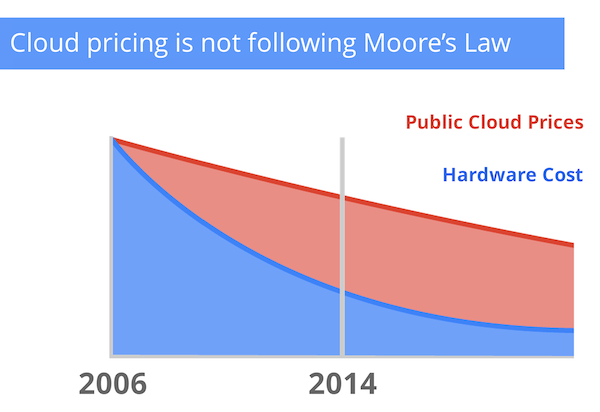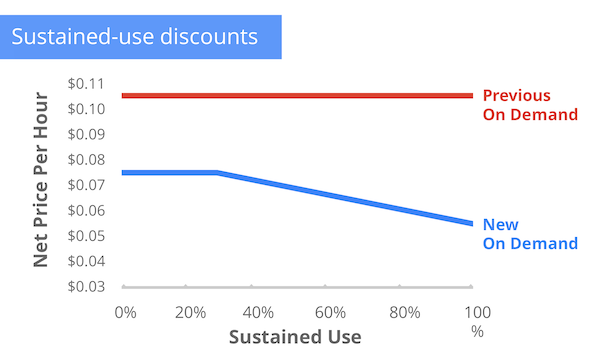Google has built a comprehensive Cloud platform with a clear focus on best-of-breed performance, scale and flexibility.
Google has built a comprehensive Cloud platform with a clear focus on best-of-breed performance, scale and flexibility. Our Cloud services are designed to allow developers large and small to create a wide range of amazing applications with easy to use tools that harness the immense global power of Google’s infrastructure. Beyond simply having the greatest technology, however, Google seeks to be the leader in establishing firm price-performance benchmarks for the industry.
Talking to our customers, we have heard several clear messages. First, Cloud pricing is too high to be a long-term replacement for the premise-based model. Prices need to come down -- not just initially but over time. Second, calculating costs should not require a PhD. Pricing should be flexible, but also easy to understand. And third, prices should be predictable and value-based. Google has listened to these concerns, and has created an approach to pricing that is simple, predictable and cost competitive.
After all -- the promise of cloud computing was to get on-demand access to high quality computing power with no capital expenditures, no commitments, and at a lower cost than building your own on-premise solution. However, pricing in our industry has not always followed this trend. Google saves you the headache of complex financial planning and helps you avoid lock-in. We think that’s good for all developers and good for the applications they want to build. For that reason, we have pioneered a number of innovations in pricing, including Sustained-Use Discounts -- a first for our industry -- and Sub-Hour Billing.
Since Cloud computing became widely available, public Cloud prices have fallen at 6-8% annually. While this may seem significant in the abstract, when you consider the larger trends in compute pricing over the last several decades, we don’t think 6%-8% comes close to reflecting the true economics of computing. Over the same period of time, the underlying hardware has fallen at 20-30% annually - following Moore’s Law. In order for Public Cloud to be a true substitute for the legacy premises-based model, we think pricing has to more accurately reflect these savings. As such, Google introduced a pricing model that will more closely follow the trends in Moore’s Law. And in addition to these downward trends, Google also introduced a series of measures to help optimize our pricing around how our customers use compute, storage and database resources:

In May 2013, we introduced sub-hour billing -- an industry-first pricing mechanism. Sub-hour billing allows developers to use more granular billing increments so they could economically run short-lived instances. All our Compute Engine instances are charged in one-minute increments with a ten-minute minimum, so you don’t pay for compute minutes that you don’t use. You can learn more about sub-hour billing here.
In addition, Google thinks that developers should have discounted prices for using Cloud resources in a predictable manner. After all, it costs less to use a machine that is already provisioned than to set up a new one, and predictable use is much easier to model and plan for. As a result Google has introduced the industry-leading concept of "sustained use" discounts. Sustained use discounts provide auto-calculated discounts for machines that are in use more than 25% in a given month. When you use a VM for an entire month, you save an additional 30% over the new on-demand prices. You can learn more about sustained-use discounts here.

Public Cloud allows developers to build robust, scalable applications. We want to make sure that this service is affordable and that we continue to add value to your applications and business as technology improves and gets cheaper. That’s why we are committed to offering innovative pricing mechanisms like Moore’s Law based pricing, sustained-use discounts and sub-hour billing on top of our already low on-demand prices.